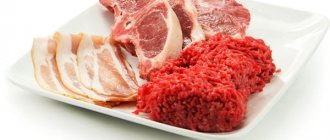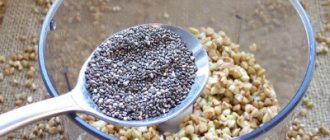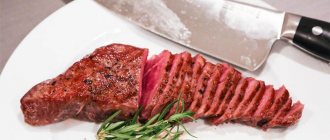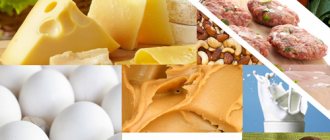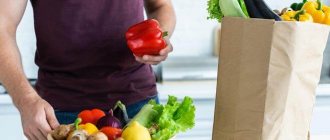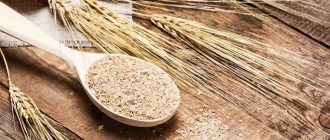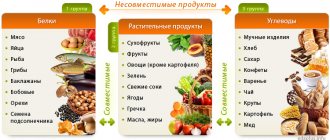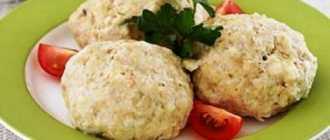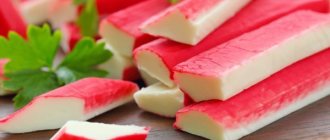The keto diet gets its name from the word ketosis. This condition is characterized by an increase in the level of ketone bodies in the body, which it later uses to maintain its own vital functions.
If a person does not receive enough carbohydrates from food, the liver begins to produce ketone bodies from fatty acids. They are an alternative source of energy. As a result, the balance of fats, proteins and carbohydrates changes, which allows you to start the process of burning fat in the body.
[Video] Dr. Berg - KETO DIET: what is the main advantage of the ketogenic diet? Why should you start?
Keto Diet Basics
Ketosis is the body's response to the production of ketone bodies. They are represented by molecules that carry energy charge. The body produces ketone bodies only when it does not receive enough glucose from food, that is, when blood sugar levels are low.
Simple carbohydrates from food break down quickly, which causes an increase in blood glucose levels. If there are not enough of them, the body triggers the production of ketone bodies. In this case, it is necessary that the amount of protein supplied with food is sufficient. Otherwise, the body will begin to process its own muscle mass.
We can talk about ketosis from the moment when the body starts the process of producing ketone bodies. If you completely give up food, it will start very soon. However, such a radical method of losing weight poses a health hazard.
In order not to harm your body, it is better to resort to the keto diet. Moreover, it can be observed over a long period of time. It will not cause damage to your health, and the process of losing excess weight will be started.
[Video] Dr. Berg - What is ketosis? What is the essence of the keto diet?
The right amount of fat
Fats are easy to calculate. Having determined the norm of proteins and carbohydrates, get the rest of your calories from fat-containing foods. If you want to gain a little weight, increase the indicator by about 500 Kcal or 55 g. To lose weight, reduce it by 200-500 Kcal or 22-55 g.
At the start of the keto diet, many people are faced with a subconscious fear of fats. I remember those days very well: “It was extremely difficult. All our lives we have been taught that fats cause obesity, heart attacks and strokes. And then suddenly you need to eat 200 g of fat every day. To achieve results, you will have to overcome a serious psychological barrier. It’s like going back to the Middle Ages and proving to people that the earth is round.”
And yet, in the first couple of days it will be difficult to eat enough fat. Replenish the deficiency with butter, nuts, olive and coconut oil and fatty meats. But be careful with polyunsaturated fats found in soybean, corn and sunflower oil. Those who abuse them often develop digestive disorders and are forced to abandon the ketogenic diet.
Rules for achieving ketosis
To put your body into a state of ketosis, you must follow these guidelines:
- The total daily amount of carbohydrates supplied to the body from food should be equal to 35-50 grams. In its pure form, this number is 20 g.
- You can eat foods containing fats on a keto diet without any fear that the weight loss process will be suspended. In this case, they are sources of energy.
- You will need to drink at least 3 liters of clean water per day.
- Snacks are prohibited on a keto diet, as they provoke an increase in insulin levels in the blood.
- During the diet, you need to do physical exercise, but it should not be exhausting. Half an hour of exercise per day is enough to speed up the process of fat breakdown.
- To lose excess weight, you need to cut your daily calorie intake by 500 kcal. To gain muscle mass, you need, on the contrary, to increase your daily caloric intake by 500 kcal. These are not absolute values and can be changed depending on the body's weight and energy expenditure.
- Salt consumption should be limited.
- You need to eat at least 5 times a day with an interval of 3-4 hours. The last meal should take place three hours before the night's rest.
If you follow all the rules of the keto diet, you will be able to lose 0.5-2.5 kg of weight in a week. As for specific numbers, the final result depends on the individual characteristics of the body. The diet is popular both among ordinary people and among bodybuilding athletes. This is because there is no loss of muscle mass during the keto diet. Celebrities such as Alice Milano, Melissa McCartney and Kim Kardashian do not hide their addiction to the keto diet.
[Video] Dr. Berg - Keto Adaptation: How to Get into Ketosis?
Saturated and unsaturated fats
Don't let these great words confuse you. Simply put, different types of fat behave differently in our bodies, which actually means that not all fats are bad for us.
Saturated fats are usually solid at room temperature (butter), while unsaturated fats are liquid at room temperature (olive oil). Saturated fats are found in animal products such as meat, dairy and eggs, while unsaturated fats come from plant sources such as nuts and seeds, and some vegetables (avocados and olives).
On a ketogenic diet, you'll consume a certain amount of fat per day depending on your specific parameters and diet goals, so do your best to consume equal amounts of saturated and unsaturated fat for best results.
Stages of adaptation of the body to ketosis
- Stage 1.
The entire volume of carbohydrates should be consumed in the first half of the day. In this case, the energy from them will be completely recycled. Then glycogen will begin to connect, which will produce its own glucose.
- Stage 2.
Carbohydrate foods are kept to a minimum. Now glycogen from the liver and muscles is entirely responsible for energy production. After another 2-3 days, the body will begin to look for alternative sources of energy.
- Stage 3.
After three days, all glycogen reserves will be depleted. The body has 2 sources left from which it can get energy - proteins and fats. Fats will begin to burn, but full-fledged ketosis has not yet occurred at the third stage. The body begins to process proteins that come with food into glucose. If a person does not receive enough protein products, the body will burn muscle, which is very bad. Therefore, the keto diet involves doubling the proteins in the menu. That is, instead of 2 g of protein, for each kilogram of weight you will now need to eat 4 g.
- Stage 4.
After a week, the body understands that carbohydrates will not be supplied with food. Then he begins to draw it from fat deposits. Only from this moment can we consider that ketosis is fully started.
How it works?
We used to think, or rather, we were so often told, that glucose is needed to start metabolism. Where can I get it? Of course, in foods with a lot of carbohydrates - cereals, whole flour, fruits.
Try a more gentle diet, but similar in principle to keto - low carb high fat or lchf diet (high fat low carbohydrate).
However, in this case, the body burns these quick and long-lasting carbohydrates without touching the existing fat at all. It is, as it were, put aside for a “rainy day” and is an emergency reserve, which greatly upsets us.
Receive a book as a gift >
The Ketogenic diet is based on a lack of carbohydrates. As soon as the body realizes that there is not enough fast fuel, it takes on the resources that are already available, that is, our deposits on the sides and hips.
Ketosis sets in - the body takes energy from fats. Sounds like a dream.
Three types of keto diet
There are three types of keto diets, including:
- Standard weight loss plan.
The standard keto diet is the easiest option for beginners to lose excess weight. This scheme does not involve refeeds; this is the name given to certain time periods during which it is necessary to increase the amount of carbohydrate foods. The balance of fats, carbohydrates and proteins does not change throughout the diet. This option is optimal for people who do not engage in active sports, or who feel good during training with a low intake of carbohydrates into the body.
- Targeted weight loss technique.
A targeted keto diet involves the introduction of refeeds, that is, it will be necessary to eat carbohydrate foods. This is done before and after physical activity. Such refeeds allow you to increase the effectiveness of your workouts by increasing blood glucose levels. The rest of the time, a person should adhere to the keto diet menu. It is necessary to introduce refeeds to people who experience a loss of strength during physical activity.
- Cyclical keto diet.
The cyclical keto diet involves the introduction of refeeds at a time when the glycogen reserve in muscle mass is completely depleted. This version of the keto diet is suitable for people who are clearly aware of when exactly they need to increase the intake of carbohydrates in their food. That is, it is more suitable for “advanced” users. It is impossible to accurately determine the time of glycogen depletion, since this is a purely individual process. To decide on it, you will need to try other, easier options for the keto diet.
If you are trying the keto diet for the first time, then it is best to start with the standard method. After just 7 days, you will be able to adequately assess your own well-being and how the keto diet affects the duration and intensity of physical activity. If your health worsens, or you experience a loss of strength, then your body needs to be recharged with carbohydrates. So it's time to switch to a targeted or cyclical keto diet.
A quick ketogenic dish for all occasions - recipe
It's an easy way to eat delicious food and clean out your fridge. A variety of ingredients is welcome! The amount of macronutrients will depend on the protein and vegetable sources chosen.
Place the following products in a frying pan greased with butter or olive oil:
- Protein: ground beef, sausage, bacon, chicken, eggs
- Vegetables: paprika, onions, cabbage, mushrooms, asparagus, tomatoes, zucchini
- Sugar free seasoning: salt, pepper, garlic, taco, ranch
- Cheese: grate and sprinkle on top, let melt
Snacks:
- Jerky (watch the carbohydrate content, it's all about the flavorings - they are quite carbohydrate).
- Cheese cubes
- Nuts and seeds
- Vegetables with sauce
- Jelly without sugar
Keto diet meal plan
To start following a standard keto diet, you need to calculate your daily calorie intake. If you plan to lose weight by burning fat, then you will need to subtract 500 kcal from the resulting number. If you need to gain muscle mass, then you will need to add 500 kcal to the resulting number.
| 1 g per 1 kg of lean muscle mass | Kcal per 1 g | |
| Squirrels | 2,2 | 4 kcal |
| Fats | 1,8-1,88 | 9 kcal |
| Carbohydrates | 0,22-0,44 | 4 kcal |
To determine lean muscle mass, you need to know your body fat percentage. If it is not possible to accurately calculate it, then you can rely on the picture presented.
First you need to calculate your daily intake of proteins and carbohydrates. The remaining number will be allocated to fats.
Calculation example: a man weighs 80 kg and his height is 175 cm.
His body fat is 20% and his lean muscle mass is 64 kg. He is faced with the task of burning excess fat. The daily calorie content is equal to 2500 kcal - this number allows him to eat normally, but not lose weight. To start the process of burning fat, 500 kcal is taken away from 2500. So, to burn fat, a man will need to receive 2000 kcal per day.
These include:
- Proteins: 2.2*64 = 140 g (560 kcal).
- Carbohydrates: 0.44*64 = 28 (112 kcal).
- Fats: 2000 – 560 = 1328 kcal (150 g).
You can divide the resulting amount of fats, carbohydrates and proteins into 4 meals. Although this condition is not mandatory. A person can eat at his own discretion. The main thing is that the balance is not upset.
The daily requirement of kilocalories can be calculated using the Mifflin-Geor formula. It is adapted to the lifestyle of a modern person in 1990.
| For women: (10×weight (kg)) + (6.25×height (cm)) – (5×age (years)) – 161 |
Calculation example: (10×70)+(6.25×165)-(5×25)-161 = 700+1031-125-161=1445 - daily calorie content
| For men: 5 + (10 × weight (kg)) + (6.25 × height (cm)) – (5 × age (years)) |
Calculation example: 5+(10×90)+(6.25×180)–(5×30) = 5+900+1125-150 = 1880 – daily calorie content.
Targeted Ketone Diet
To adhere to a targeted keto diet, you need to add 0.5 - 1 g of carbohydrates before each lesson. They will be used during training as a source of energy. In order not to exceed the specified calorie content, the amount of fat can be reduced. If necessary, the entire amount of carbohydrate food can be divided into 2 meals. Half is consumed before training, and the other half after training.
Cyclical ketone diet
After 14 days from the start of the diet, 5-10 g of carbohydrates are added per 1 kg of dry weight. Carbohydrate loading can last for 9-36 hours. You need to start with the minimum number of hours, namely nine. Gradually it will be necessary to add two hours at a time and monitor the result. On such days, you should eat protein foods, but cut down on fats so as not to go beyond the daily caloric intake. Carbohydrate loading is repeated once a week.
If the goal of the keto diet is to burn fat, then on carbohydrate days the daily calorie content is left the same, without subtracting 500 kcal from it.
What is keto nutrition?
If you are already familiar with this term, then you can safely move on to the point about what you can eat. I also collected recipes for every day.
If you haven’t heard about this nutrition yet, I advise you to stay here and read. It will be useful.
Did you know that you can and should eat fat to lose weight? Almost all doctors in the world are now writing about this. Butter, lard, and pork are no longer on the stop list for many stars and athletes. How is this possible?
The name of the diet in English is Ketogenic, which means “rich in fat” in English. If fried potatoes come to mind, you're wrong.
Mark Gieman, a famous American nutritionist, gives an example:
“How is foie gras (goose liver filled with fat) prepared? The goose is forcibly and for a long time fattened... is it really fat? No, carbohydrates! It’s not fat that causes fatty liver disease, it’s sugar.”
We are not talking about fried food, but about enriched with healthy fats. There are many of these in fish, oil, nuts, and some vegetables. These elements are extremely important for the body, especially useful for nursing mothers. Omega 3 and other microelements help restore hormonal balance, affect the regular cycle, and are also necessary for the child in the first two years of life for further normal brain development. If you want to raise a person with a flexible and inquisitive mind, do not forget to eat the foods listed below while breastfeeding, and also be sure to introduce them into your baby's diet.
Strictly speaking, the Ketogenic diet can hardly be called a diet. Rather, it is a daily nutrition system with a rich diet and a specific list of products. It takes into account the daily weight of proteins, fats and carbohydrates. This way you get all the necessary elements, eat well and lose weight.
Calorie counting apps for Android and IOS
It is very convenient to calculate daily caloric intake using special applications. They are designed for both Android and IOS operating system users. You can download them from PlayMarket and AppStore.
The applications are freely available and there is no need to pay for them. However, some of them are supplemented with special paid options that allow you to expand the capabilities of the program you are using. Although the standard version will be enough to count kilocalories.
List of the most convenient and frequently downloaded applications for counting calories:
- My Fitness.
- Fat Secret counter.
- Lifesum counter.
- YAZIO.
- Calorie counter from Dine4Fit.
Flaws
However, the technique is not without its drawbacks:
- a specific smell of acetone from the mouth, from sweat and urine due to increased fat metabolism. At the same time, the more subcutaneous fat and the faster weight loss occurs, the stronger the presence of odor. Not a deviation from the norm;
- painful condition. The transition to a ketogenic menu and achieving ketosis is accompanied by a cold: headaches, irritability, nausea, insomnia, the desire to eat carbohydrate foods, cramps. The last symptom is eliminated with the help of electrolytes;
- constipation. A deficiency of fiber and magnesium in the diet leads to illness;
- risk of developing ketoacidosis in type 1 diabetes, rarely in type 2.
Menu for a week of keto diet
Example keto diet menu No. 1:
| Breakfast | Dinner | Dinner | Before bedtime | |
| 1 | Kefir and green tea | Chicken fillet and greens | Salad: cucumber, tomatoes, pepper | Cottage cheese |
| 2 | Yogurt, almonds | Chicken fillet, chicken broth, greens | Lettuce, cheese | Assorted nuts |
| 3 | Walnuts, green tea | Scrambled eggs with ham, cucumber | Cheese and greens | Cottage cheese and yogurt |
| 4 | Cheese and yogurt | Red fish, broccoli | Scrambled eggs, green vegetable salad | Kefir and nuts |
| 5 | Ovary and tomato | Baked fish, cheese | Salad: cheese, cucumber, tomato | Green tea and cottage cheese |
| 6 | Cottage cheese and a glass of kefir | Beef ribs, cucumber | Cheese, boiled fish | Yogurt, nuts |
| 7 | Fish and cottage cheese | Cheese and bacon and eggs | Salmon and greens | Nuts and yogurt |
Example keto diet menu No. 2:
| Breakfast | Snack | Dinner | Snack | Dinner | For the night | |
| 1 | Boiled eggs – 3 pieces. Cabbage and cucumber salad. Unsweetened black tea. | Cottage cheese and applesauce (the apple needs to be stewed). | Borscht with meat broth. Chicken fillet. 2 whole grain breadcrumbs. Vegetable Salad. Compote without sugar. | Boiled beef. | Boiled fish and tea. | Protein cocktail. |
| 2 | Toast with cheese – 1 piece. Fish fillet soufflé. Tea. | Fat cottage cheese. | Chicken broth with meat. Minced beef patties. Brown rice. Cheese. | Three eggs in the form of an omelet. Green tea. | Boiled chicken fillet. Salad and tea. | Casein (or cottage cheese). |
| 3 | Turkey fillet and breadcrumbs. | Cottage cheese and baked apple. | Chicken broth. Salmon. Brown rice. Vegetable salad. | Cheese. | Minced rabbit meatballs. Green tea. | Protein cocktail. |
| 4 | 3 boiled eggs and tea. | Cottage cheese. | Meatball soup. Minced hake balls. Tea. | Cottage cheese and rosehip infusion. | Beef pate. Kefir | Casein (or cottage cheese) |
| 5 | Rice pudding. Cottage cheese. Rusk. Tea. | Cheese and dogwood broth. | Fish broth with meatballs. Chicken souffle. Quince decoction. | Rose hip decoction. | Salad. Chicken fillet. Tea. | Kefir. |
| 6 | Boiled eggs – 3 pieces. Toast with cheese. Tea. | Cheese. | Broth on meat. Minced chicken cutlet. Vegetable Salad. Kefir. | Rusk and rosehip decoction. | Red fish. Toast with cheese. Tea. | Protein cocktail. |
| 7 | Beef chop. Rusk and green tea. | Cottage cheese and rosehip decoction. | Beef broth with minced meat. Meatballs from pike perch fillet. Kissel. | Cheese. | Three eggs in an omelet. Vegetable Salad. Tea. | Kefir. |
The presented keto diet menu is designed for those people who plan to burn fat rather than gain muscle mass. That is, 500 kcal was removed from the daily calorie intake.
Whogenic diet for beginners - menu examples
Breakfast Option #1: Scrambled Eggs with Sautéed Vegetables and Bacon
- Butter or vegetable oil - 1 tbsp. l.
- Scrambled eggs with butter from 2 large eggs
- Bacon – 2 slices
- Spinach – 3/4 tbsp.
- Mushrooms – half a cup (sauteed with spinach in bacon fat)
Nutritional value per serving
- Calories – 774
- Fat – 56 g
- Carbohydrates – 5 g
- Protein – 25 g
Breakfast option #2: Egg-free breakfast
- Snack sausage – 28 g (make sure there is no sugar)
- Paprika – 1 tbsp. (fried in 1 tbsp olive oil)
- Pepper Jack cheese – 28 g
Nutritional value per serving
- Calories – 533
- Fat – 45 g
- Carbohydrates – 9 g
- Protein – 23 g
Lunch Option #1: Taco Salad
- Minced beef 20% fat – 85 g
- Taco Seasoning – 2 tsp.
- Shredded romaine lettuce – 2 tbsp.
- Cherry tomatoes – 3
- Cheddar cheese – 42 g
- Quarter of an avocado
- Sour cream - a quarter cup
Nutritional value per serving
- Calories – 570
- Fat – 42 g
- Carbohydrates – 12 g
- Protein – 36 g
Lunch Option #2: Lettuce, Bacon and Tomato Wraps
- Romaine lettuce – 3 large leaves
- Bacon – 6 slices
- Grilled chicken – 57 g
- Cherry tomatoes – 5 small
- Monterey Jack cheese – 28 g
- Mayonnaise – 2 tbsp. l.
Nutritional value per serving
- Calories – 632
- Fat – 48 g
- Carbohydrates – 8 g
- Protein – 42 g
Dinner option #1: Pork chop with mushroom sauce and steamed asparagus
- Pork chop – 113 g
- Olive oil - half a tbsp. l.
Mushroom sauce:
- Porcini mushrooms – 3/4 tbsp.
- Butter – 1 tbsp. l.
- Chopped garlic – 1 tsp.
- Ground thyme – 1 pinch
- Heavy whipping cream - 3 tbsp. l.
- Steamed asparagus - half a cup
- Butter – 1 tbsp. l.
Nutritional value per serving
- Calories – 675
- Fat – 55 g
- Carbohydrates – 9 g
- Protein – 36 g
Dinner option No. 2: Baked salmon with baked stuffed “potatoes”*
- Atlantic salmon – 113 g (with half a tablespoon of butter)
- Steamed cauliflower puree – 3/4 tbsp.
- Butter - 1-1/2 tbsp. l.
- Sour cream – 2 tbsp. l.
- Bacon – 1 slice
- Green onions – 1 tbsp. l.
- Cheddar cheese – 42 g
Note : *Combine all ingredients except salmon and bake at 177 degrees until golden brown.
Nutritional value per serving
- Calories – 653
- Fat – 53 g
- Carbohydrates – 6 g
- Protein – 38 g
Allowed and prohibited foods on the keto diet
Allowed keto diet foods:
Food products that can be eaten:
- Red meat, regardless of the method of heat treatment.
- Chicken and turkey.
- Rabbit meat.
- Sea and river fish of fatty varieties.
- Seafood.
- Chicken egg white.
- Vegetable oils.
- Hard cheese.
- Butter.
- Sour cream and cottage cheese, as well as other fatty dairy products.
- Green vegetables: cabbage, zucchini, cucumbers, lettuce, green beans, celery.
- Nuts.
- Flaxseed and olives.
[Video] Dr. Berg - Key Foods for the Keto Diet:
| Product | Squirrels | Fats | Carbohydrates | Kcal per 100 g |
| Vegetables, mushrooms, greens: | ||||
| Mushrooms | 3,5 | 2 | 2,5 | 30 |
| Black Eyed Peas | 2,8 | 0,4 | 8,4 | 47 |
| Iceberg (lettuce) | 0,9 | 0,1 | 1,8 | 14 |
| Olives | 0,8 | 10,7 | 6,3 | 115 |
| cucumbers | 0,8 | 0,1 | 2,8 | 15 |
| Cauliflower/Peking/Brussels sprouts | 2,5/1,2/4,8 | 0,3/0,2/0 | 5,4/2/8 | 30/16/43 |
| Zucchini | 0,6 | 0,3 | 4,6 | 24 |
| Green peas | 5 | 0,2 | 13,8 | 73 |
| Celery | 0,9 | 0,1 | 2,1 | 12 |
| Nuts: | ||||
| Flax-seed | 18,3 | 42,2 | 28,9 | 534 |
| Peanut | 26,3 | 45,2 | 9,9 | 551 |
| Nuts | 15 | 40 | 20 | 500 |
| Cereals: | ||||
| Brown rice | 7,4 | 1,8 | 72,9 | 337 |
| Sauce: | ||||
| Mayonnaise | 2,4 | 67 | 3,9 | 627 |
| Dairy products: | ||||
| Ryazhenka | 2,8 | 4 | 4,2 | 67 |
| Sour cream 25% fat | 2,6 | 25 | 2,5 | 248 |
| Cream 20% fat | 2,8 | 20 | 3,7 | 205 |
| Kefir fat content 3.2% | 2,8 | 3,2 | 4,1 | 56 |
| Milk 3.2% fat | 2,9 | 3,2 | 4,7 | 59 |
| Meat, sausage and poultry: | ||||
| Goose | 16,1 | 33,3 | 0 | 364 |
| Duck | 16,5 | 61,2 | 0 | 346 |
| Turkey | 19,2 | 0,7 | 0 | 84 |
| Boiled chicken | 25,2 | 7,4 | 0 | 170 |
| Sausages | 12,3 | 25,3 | 0 | 277 |
| Sausages | 10,1 | 31,6 | 1,9 | 332 |
| Smoked sausage | 9,9 | 63,2 | 0,3 | 608 |
| Dried sausage | 24,1 | 38,3 | 1 | 455 |
| Ham | 22,6 | 20,9 | 0 | 279 |
| Bacon | 23 | 45 | 0 | 500 |
| Rabbit | 21 | 8 | 0 | 156 |
| Boiled veal | 3,7 | 0,9 | 0 | 131 |
| Boiled beef | 25,8 | 16,8 | 0 | 254 |
| Salo | 2,4 | 89 | 0 | 797 |
| Pork | 16 | 21,6 | 0 | 259 |
| Egg: | ||||
| Soft-boiled chicken egg | 12,8 | 11,6 | 0,8 | 159 |
| Fish and seafood: | ||||
| Sprats | 17,4 | 32,4 | 0,4 | 363 |
| Acne | 14,5 | 30,5 | 0 | 332 |
| Tuna | 23 | 1 | 0 | 101 |
| Cod liver in oil | 4,2 | 65,7 | 1,2 | 613 |
| Herring | 16,3 | 10,7 | 0 | 161 |
| Sturgeon | 16,4 | 10,9 | 0 | 163 |
| Seafood | 15,5 | 1 | 0,1 | 85 |
| Salmon | 19,8 | 6,3 | 0 | 142 |
| Red caviar | 32 | 15 | 0 | 263 |
| Pink salmon | 20,5 | 6,5 | 0 | 142 |
| Oil and fat: | ||||
| Cooking fat | 0 | 99,7 | 0 | 897 |
| Animal fat | 0 | 99,7 | 0 | 897 |
| Linseed oil | 0 | 99,8 | 0 | 898 |
| Butter | 0,5 | 82,5 | 0,8 | 748 |
| Vegetable oil | 0 | 99 | 0 | 899 |
| Beverages: | ||||
| Mineral water | 0 | 0 | 0 | 0 |
| Green tea | 0 | 0 | 0 | 0 |
| Black tea | 20 | 5,1 | 6,9 | 152 |
[Video] Dr. Berg - DAIRY on the Keto Diet / Can you eat dairy on the ketogenic diet?
Prohibited foods on the keto diet:
Products that are prohibited for consumption:
- Sugar and honey.
- Cookies, baked goods, ice cream, chocolate, sweets, jam and preserves.
- Starch.
- Powdered drinks.
- Bran and seeds.
- Sparkling water.
- Products containing sorbitol and fructose.
- Pasta.
- Bread and crackers.
- Vegetables: beets, carrots, potatoes.
- Milk and fermented milk drinks containing sugar.
- Fruits, including grapes, bananas, melon.
- Juice, coffee and beer.
| Products | Squirrels | Fats | Carbohydrates | Kcal per 100 g |
| Vegetables and berries: | ||||
| Grape | 0,6 | 0,2 | 16,8 | 65 |
| Beet | 1,5 | 0,1 | 8,8 | 40 |
| Turnip | 1,5 | 0,1 | 6,2 | 30 |
| Radish | 1,2 | 0,1 | 3,4 | 19 |
| Carrot | 1,3 | 0,1 | 6,9 | 32 |
| Potato | 2 | 0,4 | 18,1 | 80 |
| Bread, pasta, flour products, cereals: | ||||
| Rye bread | 6,6 | 1,2 | 34,2 | 165 |
| Vysivkov bread | 9 | 2,2 | 36 | 217 |
| Dumplings | 11,9 | 12,4 | 29 | 275 |
| Vareniki | 7,6 | 2,3 | 18,7 | 155 |
| Pancakes | 6,1 | 12,3 | 26 | 233 |
| Spaghetti | 10,4 | 1,1 | 71,5 | 344 |
| Pasta | 10,4 | 1,1 | 69,7 | 337 |
| White rice | 6,7 | 0,7 | 78,9 | 344 |
| Millet cereal | 11,5 | 3,3 | 69,3 | 348 |
| Wheat groats | 11,5 | 1,3 | 62 | 316 |
| Pearl barley | 9,3 | 1,1 | 73,7 | 320 |
| Semolina | 10,3 | 1 | 73,3 | 328 |
| Sweets, ice cream: | ||||
| Honey | 0,8 | 0 | 81,5 | 329 |
| Chocolate | 5,4 | 35,3 | 56,5 | 544 |
| Cake | 4,4 | 23,4 | 45,2 | 407 |
| Ice cream | 3,7 | 6,9 | 22,1 | 189 |
| Dough | 7,9 | 1,4 | 50,6 | 234 |
| Rusks with raisins | 8,4 | 4,9 | 78,5 | 395 |
| Cookie | 7,5 | 11,8 | 74,9 | 417 |
| Candies | 4,3 | 19,8 | 67,5 | 453 |
| Jam | 0,3 | 0,1 | 56 | 238 |
| Jam | 0,3 | 0,2 | 63 | 263 |
| Dairy products: | ||||
| Condensed milk | 7,2 | 8,5 | 56 | 320 |
| Yogurt with fruit 3.2% fat | 5 | 3,2 | 8,5 | 85 |
| Beverages: | ||||
| Raspberry juice | 0,8 | 0 | 24,7 | 100 |
| Kissel | 0,2 | 0 | 16,7 | 68 |
| Pear juice | 0,4 | 0,3 | 11 | 46 |
| Grape juice | 0,3 | 0 | 14 | 54 |
| Compote | 0,5 | 0 | 19,5 | 81 |
| Energetik | 0 | 0 | 11,3 | 45 |
| Pepsi | 0 | 0 | 8,7 | 38 |
| Sweet coffee with milk | 0,7 | 1 | 11,2 | 58 |
| Cola | 0 | 0 | 10,4 | 42 |
| Cider | 0,2 | 0,3 | 28,9 | 117 |
| Beer | 0,3 | 0 | 4,6 | 42 |
| Liquor | 0,3 | 1,1 | 17,2 | 242 |
How to Eat More Vegetables on a Ketogenic Diet
Most vegetables are low in carbs, meaning you can eat a fairly large meal and still consume fewer calories than a single serving of other types of keto-friendly foods. Vegetables are high in fiber, which is not only great for controlling your appetite, but is also good for your digestive system and overall health.
If you're not used to eating several servings of vegetables every day (because let's be honest, many of us don't eat vegetables every day), this positive change isn't that hard to make part of your diet.
Types of Safe Vegetables
You want dark and leafy vegetables. Anything that looks like spinach or kale. Vegetables grown above ground (cruciferous vegetables) are optimal.
But be careful...
Because there are vegetables that you need to avoid while dieting because they contain high amounts of carbohydrates. These are mainly root vegetables that are grown underground. Here are some vegetables to limit:
- Onion
- garlic
- mushrooms
- tomatoes
- pepper
- leek
- potato
Table of carbohydrate content in vegetables
| Name | Number of carbohydrates, g |
| Garlic | 30,96 |
| Sweet potato | 23,78 |
| Tarot | 22,36 |
| Water chestnuts | 20,94 |
| Sweet potato | 17,12 |
| Potato | 16,77 |
| Corn | 16,32 |
| Ginger | 15,77 |
| Green pea | 13,57 |
| Parsnip | 13,09 |
| Leek | 12,35 |
| Lotus root | 12,33 |
| Chestnuts | 9,69 |
| Soya beans | 8,47 |
| Onion | 7,64 |
| Celery | 7,4 |
| Chilli | 7,31 |
| Carrot | 6,48 |
| Beet | 6,46 |
| Sweet onion | 6,64 |
| Swede | 6,32 |
| Grape leaves | 6,31 |
| Pumpkin | 6 |
| Dandelion | 5,7 |
| Yellow pepper | 5,42 |
| Mini carrot | 5,34 |
| Red cabbage | 5,27 |
| Kale | 5,15 |
| Brussels sprouts | 5,15 |
| Artichokes | 5,11 |
| Enoki mushrooms | 5,11 |
| Peas | 4,95 |
| Shallot | 4,74 |
| Turnip | 4,63 |
| Shiitake mushrooms | 4,29 |
| Mitaka mushrooms | 4,27 |
| Okra | 4,25 |
| Dill | 4,2 |
| Bean sprouts | 4,12 |
| Broccoli | 4,04 |
| Physalis | 3,94 |
| Red pepper | 3,93 |
| Choke | 3,88 |
| Radicchio | 3,58 |
| Cucumber | 3,19 |
| White cabbage | 3,07 |
| Bamboo stalk | 3 |
| Green cabbage | 3 |
| Seranno pepper | 3 |
| Cauliflower | 2,97 |
| Green pepper | 2,94 |
| Eggplant | 2,88 |
| Olives | 2,8 |
| Tomatoes | 2,69 |
| Kohlrabi | 2,6 |
| Champignon | 2,57 |
| White mushrooms | 2,26 |
| Swiss chard | 2,14 |
| Zucchini | 2,11 |
| Arugula | 2,05 |
| Chinese cabbage | 2,03 |
| Green onions | 1,85 |
| Avocado | 1,84 |
| Radish | 1,8 |
| Asparagus | 1,78 |
| Mustard greens | 1,47 |
| Spinach | 1,43 |
| Parsley | 1,37 |
| bok choy | 1,18 |
| Nopales | 1,13 |
| Watercress | 0,79 |
| Broccoli tops | 0,15 |
Pros and cons of the keto diet
The advantages of the keto diet include:
- The diet helps reduce blood sugar levels, which makes it possible to fight diabetes. This diet can also be used for preventive purposes to prevent the development of the disease.
- The desire to “eat sweets” disappears completely. Even those with a sweet tooth cease to be so.
- During the diet, mental abilities increase, and in particular, concentration increases. This occurs by enriching the diet with fatty acids.
- With the help of a keto diet you can fight epilepsy. It not only helps you feel better, but also allows you to take fewer medications.
- The diet helps maintain normal cholesterol and triglyceride levels. But the amount of “good” cholesterol often even increases. This is an excellent prevention of diseases associated with high blood cholesterol and high blood pressure.
- The condition of the skin becomes better as carbohydrates are removed from the menu.
[Video] Dr. Berg - What are the benefits of the keto diet?
Cons of the keto diet:
- Disturbances in the functioning of the digestive organs, which are caused by insufficient intake of fiber into the body. To avoid such troubles, you should include 50 g of foods containing fiber in your menu, but no more.
- Increased fatigue and malaise may occur due to insufficient intake of vitamins and microelements into the body. Therefore, after completing the diet, it is recommended to drink a vitamin-mineral complex.
- As the body adapts to the keto diet, there may be increased drowsiness and irritability, as well as decreased mental activity.
[Video] Dr. Berg - The whole truth about the keto diet:
Sportipit and supplements
For a ketogenic diet, any sports supplements such as creatine monohydrate, beta-alanine and caffeine, designed to increase endurance and improve the quality of training, will do, if they were developed taking into account the latest scientific research. Therefore, if you take any pre-workout supplements, you can safely use them on the keto diet. I would also recommend eating broth before training to get enough sodium and magnesium.
In the case of BCAA amino acids, everything is not so clear. The greatest minds are divided on this matter. Some claim that they are suitable for the keto diet, others are sure that they are not. One of the BCAA constituents (valine) is glycogenic, therefore, it can stimulate the production of glucose, which will interfere with ketosis. How dangerous is this? Not very much, especially if you use sports nutrition occasionally.
For the first month, limit yourself, but without fanaticism. If BCAAs help you train and recover, you should only take them during your workout rather than binge on them all day long. If you have any doubts about their effect on your ketosis level, use test strips.
It should be emphasized that if you are serious about achieving ketosis, you will need to check your levels often using ketone strips or similar devices. Do not blindly rely on the correctness of your nutrition plan!
If you wish, you can fuel up with a post-workout protein shake if it fits into your daily macronutrient requirements. But choose the lowest carb option (best of all, no carbs). If you find it difficult to eat enough fat during the day, you can add a tablespoon of olive oil to your shake. This will not affect the taste, but you will easily add 13-14 g of fat.
Those who like to create an insulin spike after training with the help of carbohydrates should stop doing this. Put the goodies back where they belong!
Try with all your might to resist the urge to have a cheat meal or fast day, or otherwise deviate from your nutrition plan. The ketogenic diet requires strict self-monitoring in the first few weeks. Give her a chance to change you!
Side effects of the keto diet
Side effects of the keto diet:
- Constipation.
- Development of vitamin deficiency.
- Cramps.
- Tachycardia.
- A jump in blood cholesterol levels.
- Decreased stamina.
- Increased fatigue.
- Lactation disturbance.
- Hair loss.
- Development of ketoacidosis and failure of metabolic processes.
- Pain in the gallbladder area if there are stones in it.
- Increased flatulence and bloating.
- Skin itching.
Creating Ketosis Through Exercise
In addition to the diet from the permitted list of foods, training will help start the process. The goal is to deplete glycogen stores.
- Day 1: high volume leg training;
- Day 2: split workout for back + biceps;
- Day 3: split workout for pectoral muscles + triceps;
- Day 4: High-intensity interval training (HIIT) 30 minutes.
To determine ketones in urine, you need to purchase special strips that are sold at the pharmacy. The strips will help determine whether you are in ketosis.
Contraindications
The keto diet cannot be followed in the following cases:
- Acute or chronic pancreatitis.
- Gallbladder diseases.
- Liver failure.
- Steatorrhea.
- Presence of a tumor in the abdominal cavity.
- Gastric bypass surgery.
- Disturbances in the functioning of the gastrointestinal tract.
- Kidney failure.
- Breastfeeding, pregnancy.
- Porphyria.
Gaining Muscle on Keto: Focus on High-Quality Proteins
A high-quality protein source is one that contains all nine essential amino acids and especially one that is rich in the amino acid leucine, key to building muscle mass. Low-quality proteins, such as grains and legumes, are usually not included in the ketogenic diet. And the animal protein sources typical of the keto diet are excellent sources of complete, high-quality protein.
The main sources of protein are: eggs (yolk and white), whole milk, Greek yogurt, cheese, chicken, turkey, pork, beef, lamb, fish and seafood.
Include these protein sources in your diet as much as possible. This way you will give your body more amino acids necessary to maintain and increase muscle mass.
Reviews and results
Irina, 26 years old: “The keto diet can only be effective if the woman plays sports. The regime must be observed very strictly. Like any other diet, it is not suitable for everyone.”
Olesya, 35 years old: “The keto diet suits me. I used to follow the Dukan diet, but now I prefer the keto diet. I have been following it for 5 years, two weeks a year. The lost kilograms do not return. During this period, on average, I manage to get rid of 6 kg of excess weight, which is my goal. But I wouldn’t risk staying on the keto diet for longer than 14 days.”
Evgenia Alekseevna, 45 years old: “I’m a doctor, so I chose the keto diet for myself. It is not suitable for beginners, so if you are going on a diet for the first time, it is better to try some other weight loss system. But if you understand the essence of the keto diet, then in a short time you can lose up to 10 kg of excess weight. I often practice it before various holidays, when I need to quickly get in shape. I don’t recommend getting carried away with a diet, much less staying on it for months.”
Fighting the “ketogenic flu”
You must have heard horror stories from competing athletes about the effects of “carbohydrate starvation” on their well-being. Well, or at least you are probably familiar with the reviews of ordinary athletes who have decided to go on a keto diet. However, this only means that these comrades have not reached the stage of ketosis, or, more importantly, were not able to build a balanced diet. It is true that slight lethargy and discomfort are possible, but they will be very minor if you know how to cope with them.
After just a couple of days of low-carb and high-fat nutrition, the concentration of ketones in the blood will increase, and the body will begin to use them as a primary source of energy. This initial keto adaptation often lasts up to four weeks, after which you reach maximum levels of fat loss.
Most of all notorious side effects usually occur in those first four weeks (or even 4-5 days). Experienced keto dieters assure that the lion's share of all these phenomena are just isolated cases caused by a lack of electrolytes.
Many people enthusiastically jump into the ketogenic diet, thinking that it will be enough to give up carbohydrates in favor of fats. But then they suddenly reach a dead end and catch the “ketogenic flu.” They are overcome by fatigue, drowsiness, and headaches. The development of all three symptoms can be explained by a deficiency of three main electrolytes: sodium, potassium and magnesium. A deficiency of any of them leads to physical and mental illness. This is where the greatest reason for all the disappointments with the keto diet lies.
So how can you avoid being deficient in these three elements? Of course, you can take nutritional supplements. But this is not the only way.
You can get sodium by simply adding salt to your food, eating salty snacks and eating chicken broth. People have a hard time accepting sodium in their diet because they associate it with water retention and slow fat burning. But replenishing sodium is vital, especially if you're exercising intensely. The other two electrolytes come from your new best friends: avocados, greens, and nuts.
Eat one or two avocados daily. Green leafy vegetables will provide you with potassium and magnesium.
The fattest nuts and seeds (almonds, pistachios, pecans, walnuts and pumpkin seeds) are also famous for their rich magnesium content. Eat plenty of them, but don't neglect nutritional supplements.
If cramps or headaches occur, quickly dissolve a bouillon cube with one or two tablespoons of salted butter in a cup of hot water. This will easily eliminate the symptoms and allow you to easily increase the dose of fat.
